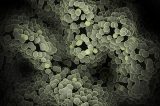ESL 2008: Production and sensory impact of Sulphur compounds
Proceedings of the XXth Entretiens Scientifiques Lallemand held in Horsens, Denmark discusses how Sulphur compounds impact wine aromas – positively and negatively. Topics presented included prevalence of wine faults from a blind tasting perspective (International Wine Challenge held annually in London), genetics of Sulphur-containing compounds in Saccharomyces and production by O. oeni during MLF.
Cahier20 Lall

